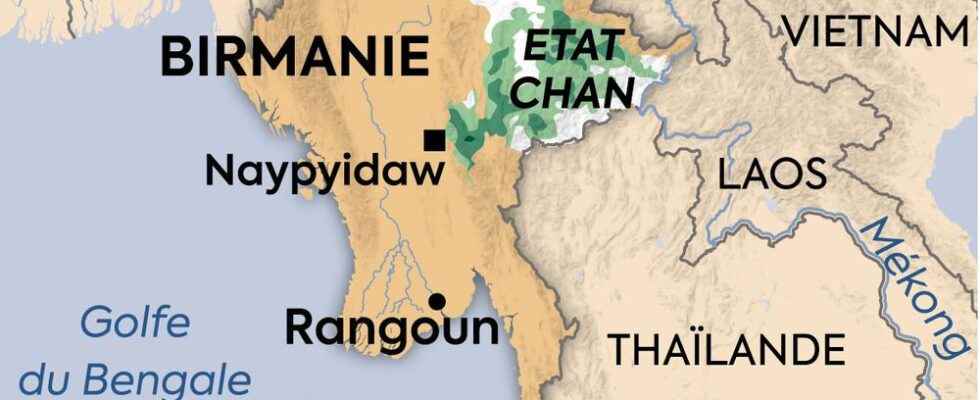At the end of October, the Laotian security forces stopped a truck carrying cases of “Beerlao”, the national beer, in the north of the country. But instead of the drink, the police get their hands on 1.5 tons of methamphetamine, a synthetic drug, and 55 million pills of yaba, its cheap derivative. With nearly 6 tons in total, it is the largest drug seizure in history in Southeast Asia.
“There is no doubt that methamphetamine was produced in Shan State, eastern Myanmar,” said Inshik Sim, researcher at the United Nations Office on Drugs and Crime (UNODC). . Located at the meeting point with Thailand and Laos, and close to China, the region, nicknamed “the golden triangle”, is one of the world’s high places for the production of narcotics. From their clandestine laboratories reclusive in the jungle, criminal groups from Burma, Hong Kong or Macao spray Southeast Asia, but also China, Japan, South Korea and even Australia and New Zealand.
“The army seeks to use drug production for its own interests”
This very lucrative business (the UN estimates it at 61.4 billion dollars per year in the region) has been growing for ten years. But the Burmese military coup a year ago accelerated the phenomenon. Political and economic instability has indeed offered the mafias “the ideal conditions to produce more methamphetamines”, explains Inshik Sim.
Especially since the generals benefit indirectly from the production of narcotics in the Shan State, through pro-military militias responsible for controlling this sensitive border area. “The army seeks to use the production of drugs for its own interests, observes Philipp Annawitt, former adviser to the fallen civilian government. Since the coup, the junta has been in “survival” mode, weakened by the collapse of the economy and the drop in foreign investment, so it’s more dependent on the revenue it gets from these militias that run the meth labs.”
To measure trends, specialists track drug seizure figures. “Those from Burma jumped in 2021,” notes Richard Horsey, adviser to the International Crisis Group. In Thailand, in the first nine months of last year, methamphetamine volumes intercepted increased by 15% compared to 2020. And in Laos, the hub of drug distribution in the region, seizures of yaba have multiplied by more than 5 in one year.
Infographics
Dario Ingiusto / L’Express
“Only North America, which has far greater resources, while being less prone to corruption, seizes as much methamphetamine, observes Jeremy Douglas, UNODC representative in East and Southeast Asia. It is therefore likely that a good part of the production goes under the radar, making Burma the world’s largest producer of these substances.
The expert also expects a strong comeback of opiates, heroin and opium in mind. Their production had fallen over the past decade as Myanmar’s economy grew. “But with the economic crisis, many Burmese will return to live in the countryside and, for lack of anything better, fall back into opium production,” says Jeremy Douglas. According to local media, poppy fields are being cultivated again in broad daylight in Shan State.
